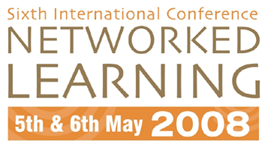

Using a Mediated Environments Reference Model to evaluate learners' experiences of Second Life
Mark Childs,
Warwick Institute of Education, University of Warwick, UK, m.childs.1@warwick.ac.uk
Abstract
The intention of this paper is threefold. Firstly it outlines a reference model that has been developed to describe the experiences of learners in mediated environments. Secondly, it describes the Theatron 3 Second Life theatre project. Finally, it analyses the value of the reference model in developing an evaluation framework. The fourth part of the process, that of applying the evaluation framework to the project, is still to be undertaken, but the preliminary results of this will be presented at the conference.
A mediated environment can be defined in a variety of ways, but the essential features are that they enable users to communicate synchronously at a distance, and use a spatial metaphor to enhance the interaction. Examples of these are telematic environments, where the participants see a physically real but remote environment, and multi-user virtual environments (MUVEs), where participants see a computer-generated simulated environment.
Conducting the literature review for this study was problematic due to the various disciplines involved; including the technological literature regarding presence (for example the use of teleoperators and telerobotics for remote operation), the use of online communication for teaching (although this is largely the role of computer-mediated text-based communication), the field of serious gaming (that is the use of gaming in education and other non-gaming areas) and the study of the social aspects of massive multiplayer online role play games (MMORPGs) and MUVEs. There are overlapping concepts between these fields, but also some inconsistencies with the terms used. It was in order to synthesise descriptions from these domains and create a more comprehensive framework for cataloguing these experiences that a reference model for mediated environments was developed.
The Mediated Environments Reference Model (MERM) divides the concepts associated with mediated environments into the following categories:
- Types of environment
- Characteristics of experience
- Characteristics of environments
- Characteristics of participants
- Types of activity
These are further subdivided and explained within the paper.
The MERM is being used to structure the data gathered during the evaluation of the Theatron 3 project. This project is directed by the directed by the King's Visualisation Lab, part of CCH, in collaboration with the Higher Education Authority Subject Centres for Dance, Drama & Music and English and funded by the Eduserv Foundation. and are a collection of twenty theatres from different historical periods. As part of this project 3D models of theatres from different periods in history will be built on a pair of islands in Second Life. Five UK higher education institutions will develop learning activities that will take place within these theatres.
As a tool for reviewing literature, the model is a means by which further literature can be viewed, and additional categories placed within the larger context. At any stage, therefore, the framework should only be seen as a snapshot of a developing work; as a means of communicating the various elements of any analysis, not an attempt to portray the entirety of the field. It also acts as a shared ground with other researchers for them to reflect upon and challenge the structure of the research. As an evaluation framework its weakness is that the structure can become self-fulfilling, in that the data that fit within it will be recognised, and that which does not will be excluded. Even if this specific framework is not adopted outside of this study, the practice of using a reference model as an effective tool to help other researchers make sense of ones research and place it within its relevant context is recommended.
| About NLC |
2008 Conference Papers
| Conference Committee| Keynote
Speakers
| Papers from previous NL conferences |Research Seminars| Current Conference
| Sponsors | Contact
|
